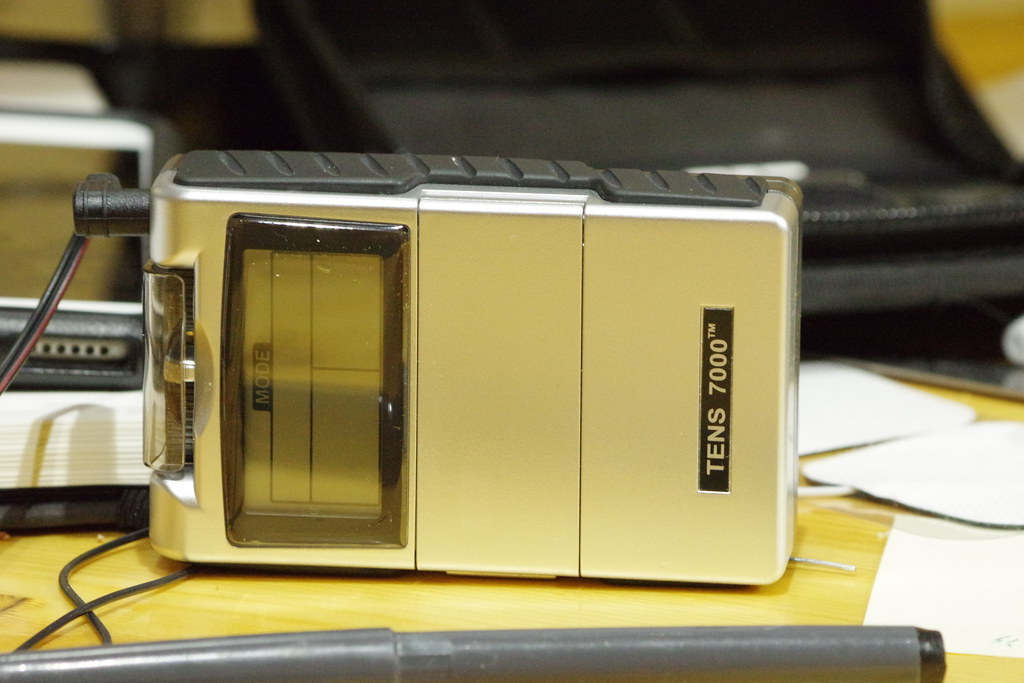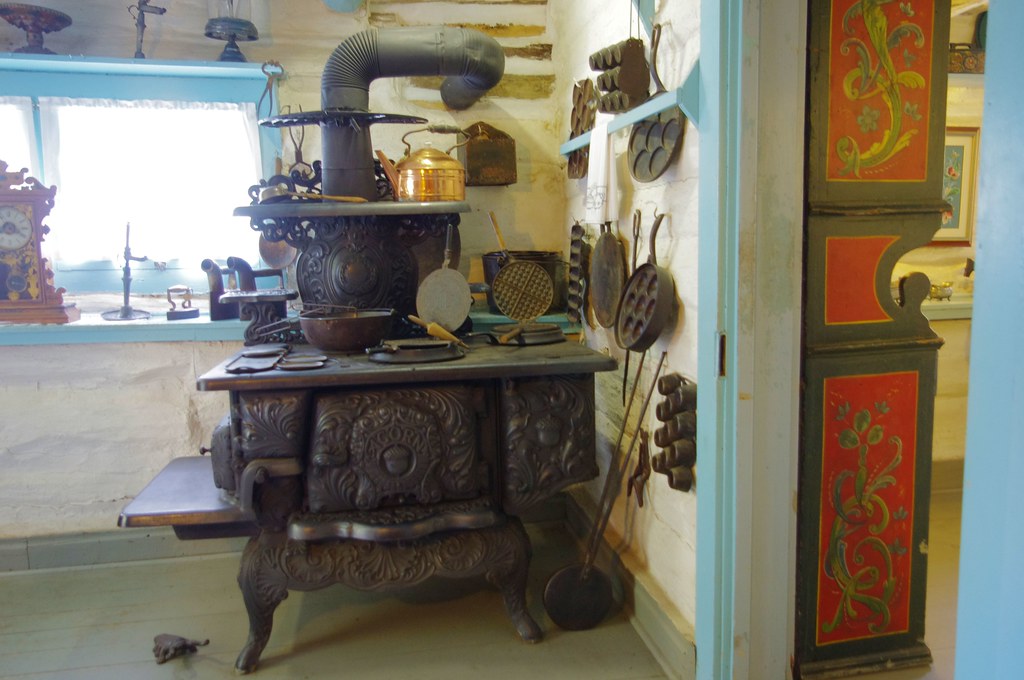Photography Now & Then #35

Today’s photo1: Nerve stimulator (TENS – transcutaneous electrical nerve stimulation) used as needed. February 4, 2018 (Pentax K-3 II)
After several rounds of physical therapy for neck, back, and shoulder pain resulting from nerve pinching in my cervical vertebrae, I was provided a loaner nerve stimulator (TENS) unit to see if I could achieve relief from the pain. After it actually worked, my physician prescribed and the insurance company approved the purchase of a TENS unit. That was over ten years ago and I have not been back for physical therapy since.
Transcutaneous Electrical Nerve Stimulation (TENS)2
Transcutaneous electrical nerve stimulation (TENS) is a therapy that uses low-voltage electrical current for pain relief. You do TENS with a small, battery-powered machine about the size of a pocket radio. Usually, you connect two electrodes (wires that conduct electrical current) from the machine to your skin.
Transcutaneous electrical nerve stimulation3
Transcutaneous electrical nerve stimulation (TENS or TNS) is the use of electric current produced by a device to stimulate the nerves for therapeutic purposes. TENS, by definition, covers the complete range of transcutaneously applied currents used for nerve excitation although the term is often used with a more restrictive intent, namely to describe the kind of pulses produced by portable stimulators used to treat pain. The unit is usually connected to the skin using two or more electrodes. A typical battery-operated TENS unit is able to modulate pulse width, frequency and intensity. Generally TENS is applied at high frequency (>50 Hz) with an intensity below motor contraction (sensory intensity) or low frequency (<10 Hz) with an intensity that produces motor contraction. While the use of TENS has proved effective in clinical studies, there is controversy over which conditions the device should be used to treat.

Photo Favorite4: Ornate stove and other display artifacts at Little Norway living museum, Wisconsin, September 17, 2012 (Pentax K-r)
Little Norway was a living museum near Blue Mounds, Wisconsin that were were lucky enough to visit in its final season. After nearly 80 years, the museum closed permanently after the 2012 season with operating costs and taxes exceeding revenues. Museum artifacts are being sold to museums and private collector to pay annual property taxes.
- Today’s Photo is a photo that is almost always taken the day of the blog post. In some instances, posts may be backdated if internet access is not available on the day of the photo or other reasons prevent posting Photograph Now and Then.
- Transcutaneous Electrical Nerve Stimulation (TENS) – WebMD
- Transcutaneous electrical nerve stimulation – Wikipedia
- Photo Favorite is a randomly selected older photograph from a batch of photos specifically “curated” for Photograph Now and Then.
Note: Reference links were accessed on the date the blog post was published, unless otherwise stated.

